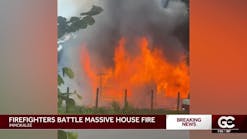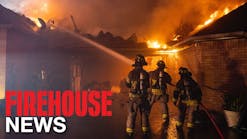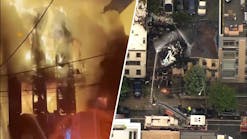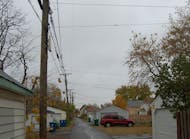Everyone who is in the fire service should know the importance of coordinated efforts between engines and trucks on the fireground. If your department is fortunate enough to have dedicated truck crews that respond to working fires, clear assignments for those members are paramount to an effective fireground operation.
What are the most critical assignments for a three-person truck crew that comprises a chauffeur, officer and jumpseat firefighter? What duties must be accomplished by each? How are these duties assigned so as to ensure that they are accomplished quickly and as safely as possible?
If you run with four-person staffing, as some departments do, it’s easy enough to team that additional firefighter with another member to have the two of them take over select duties.
Truck work
If you only use your ladder trucks as transport vehicles, you are wasting them and the dedicated individuals who committed themselves to their craft as a truckie.
“Truck company operations” or “truck work” are terms that are used to describe the type of work or tasks that are carried out on the fireground in support of a coordinated fire attack. You will notice here that most assignments require each firefighter to carry more than one tool. If your crews aren’t carrying two tools, you should consider changing that policy: There are very few scenarios where only one tool is needed for the duration of an incident.
To ensure that you grab the proper tools, you must do a good personal size-up and consider what your assignment is going to be. Knowing the strengths and weaknesses of your crew members is essential.
So, how do you assign tasks on the fireground without duplication of efforts or completely missing an assignment? The simplest way for task allocation is to create seat riding assignments, by which the seat location in the apparatus designates the job assignment.
Below you will find some recommended duties to be accomplished by the first-due—and second-due—truck and tool selections for those duties. Whether your department has a ladder apparatus or not, the duties of the truck company must get accomplished for efficient fireground operations.First-due truck
The primary duties of the first-due truck are the primary search of the fire area and fire floor and laddering the structure.
Member Tasks & Tool Assignments
Officer—Duties: Forcible entry and primary search; tools: Halligan, thermal imaging camera (TIC) and Hydra-Ram.
With a three-person crew the officer must take an active operational position. This means carrying tools and getting dirty. The officer must maintain accountability of the crew and its operations.
Size-up of the building or area is essential. Use of a TIC helps to provide fire behavior information and to assist with the primary search, looking for life and fire.
Before you start the primary search, you must gain entry to the fire building or area. Pairing the officer’s Halligan with a wedge and mini-sledge is a force multiplier. The mini-sledge provides the officer the ability to force entry before the jumpseat firefighter teams with the officer. When having to force multiple doors, a Hydra-Ram, or rabbit tool, is a great addition to the officer’s tool package.
Jumpseat firefighter—Duties: Forcible entry and primary search; tools: striking tool and water can.
With a three-person crew, the jumpseat firefighter must operate independently at times and might need to assist the officer with forcible entry. The position should carry the water can to assist the two of them if needed during their primary search. (The water can is 2½ gallons of fire control that has the capability to knock down a large amount of fire or keep the room in check until the hoseline is in place and operating.)Because officers want a primary search to be immediate, thorough and aggressive, the jumpseat firefighter should be looking not only for victims but for the seat of the fire and any extension of the fire. The primary search usually is under extreme conditions, including high heat and very-low-to-zero visibility. To ensure success with the primary search and to keep firefighters safe:
- Always have your tools: Whether the firefighter uses the tool to assist in the search or not, the tool should be with that individual at all times in case of an emergency, such as if the firefighter encounters a door that must be forced or that individual gets cut off from egress and must breach a wall to self-rescue
- Always practice good search techniques to help to keep yourself orientated inside of the room that you are searching: A good practice is to use the wall as your reference point to keep your bearing
Chauffeur—Duties: Check the rear of the structure and outside vent operations; tools: 6-foot hook and Halligan.
The chauffeur has several jobs on the fireground but tends to be the odd man out when operating with a three-person crew. The report from the rear of the structure is important for the operation of the incident. This report is part of the primary search but done from the exterior, and it should provide any information on fire or smoke conditions as well as whether any victims are visible in windows or on fire escapes. The chauffeur must be prepared to operate in the rear with limited tools and staffing until help arrives. At minimum, when checking the rear, the chauffeur should carry a Halligan and 6- or 8-foot hook. The hook can be used to pull down fire escape ladders as well as to provide a reference point when performing a vent enter search (VES) in a window where a victim is presenting.
If the rear is clear, the chauffeur can begin laddering the building either with the aerial device or ground ladders.
Fourth person/second jumpseat firefighter—Duties: VES; tools: 6-foot hook, flashlight and TIC, if available.
If you are fortunate enough to have a four-person crew, that extra jumpseat firefighter will team with the chauffeur to handle many different tasks based on occupancy and circumstances. A good assignment for this team is VES off of ground ladders or lower roofs, if they are present. If one is available, this team should carry a TIC to assist in VES. Using the features of the building to your advantage, lower roofs or bump-outs that allow you to access several windows without repositioning the ladder allow for quicker and more efficient searches using the VES technique.Second-due: search or vertical ventilation
If the primary duty of the second-due truck is primary search, that search takes place on the floor above the fire floor and in the rest of the structure.
Member Tasks & Tool Assignments
Officer and jumpseat firefighter—Duties: Primary search; tools: Halligan, TIC, 6-foot hook and Hydra-Ram.
If conditions allow, best practice is to function as a single three- to four-person team based on the work that’s required. When assigned to an interior position, the duties and tools of the second-due truck closely mirror those of the first-due.
Because the first-due truck is assigned to search the fire floor, the second-due may be assigned to search the rest of the building, starting on the floor above the fire floor, getting to the top floor and then working your way down. Searching above the fire is inherently dangerous, therefore communication with your engine crews is critical. The engine crews must know that you are above them, so they can coordinate placement of hoselines for egress as well as that of potential victims.
Chauffeur—Duties: Ground ladders and/or placing aerial ladder; tools: 6-foot hook and Halligan, unless the fire conditions dictate otherwise.
Depending on the size of the structure, the chauffeur should get some ground ladders in position or the aerial if conditions warrant. The aerial can be set for roof access or exposure protection based on need.
Fourth person/second jumpseat firefighter—Duties: Ground ladders/primary search; tools: 6-foot hook, Halligan and flashlight
The second jumpseat firefighter can team with the chauffeur to assist with laddering before joining the inside team for search.
Second-due: ventilation
In situations where primary duty of the second-due truck is vertical ventilation, the entire crew will access the roof with proper tools.
Vertical ventilation should be performed whenever there is fire under the roof or when fire is on the top floor of a building.
Member Tool Assignments
Officer—Tools: Halligan, 6-foot hook and TIC
Jumpseat firefighter—Tools: K-12 saw or chainsaw based on building construction, pickhead axe and roof rope.
Fourth person/second jumpseat firefighter—Tools: Second saw, extra gasoline (if potential for prolonged operations) and 8-foot hook.
The chauffeur is initially responsible for aerial and ground ladder placement (multiple points of egress) and scene lighting, if the call pertains to night operations.
A strong base
All of this information lays the groundwork for a successful truck company operation and can be turned into an operating guideline for your truck companies. Of course, you shouldn’t hesitate to consider additions or deletions so as to make the information work for your department’s needs.
Furthermore, it’s critical that all company members know the operation of each crew member. If all of you are on the same page, you will ensure safe and efficient operations.

Sean Eagen
Sean Eagen is a 26-year veteran of the Buffalo, NY, Fire Department. He currently is the captain of Truck 4. Eagen also is an instructor for the New York State Office of Fire Prevention and Control Special Operations Branch. He regularly presents at Firehouse's conferences.









